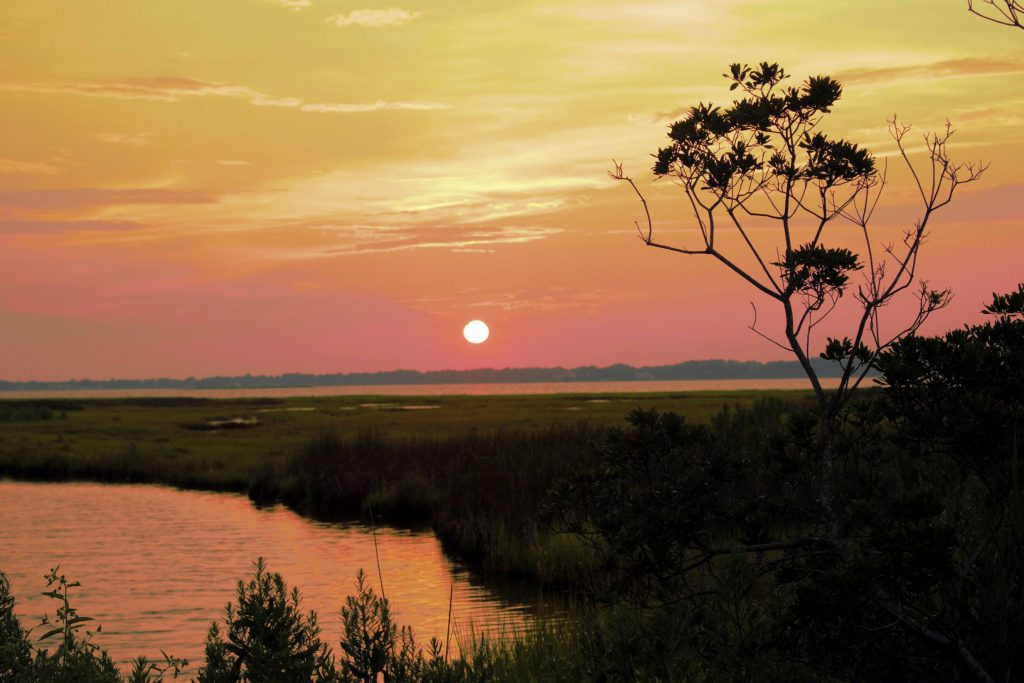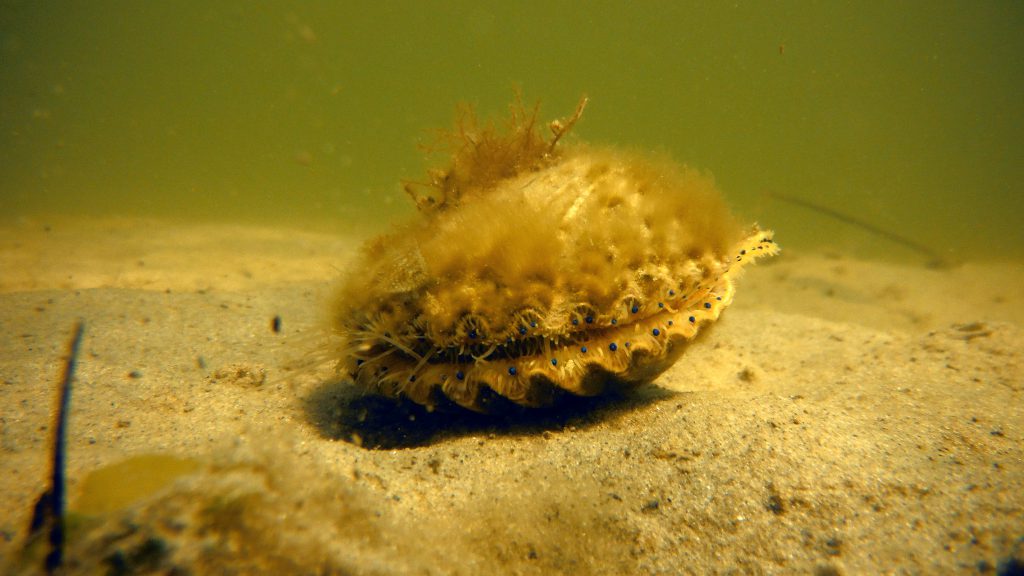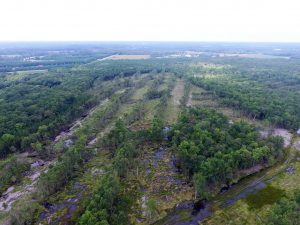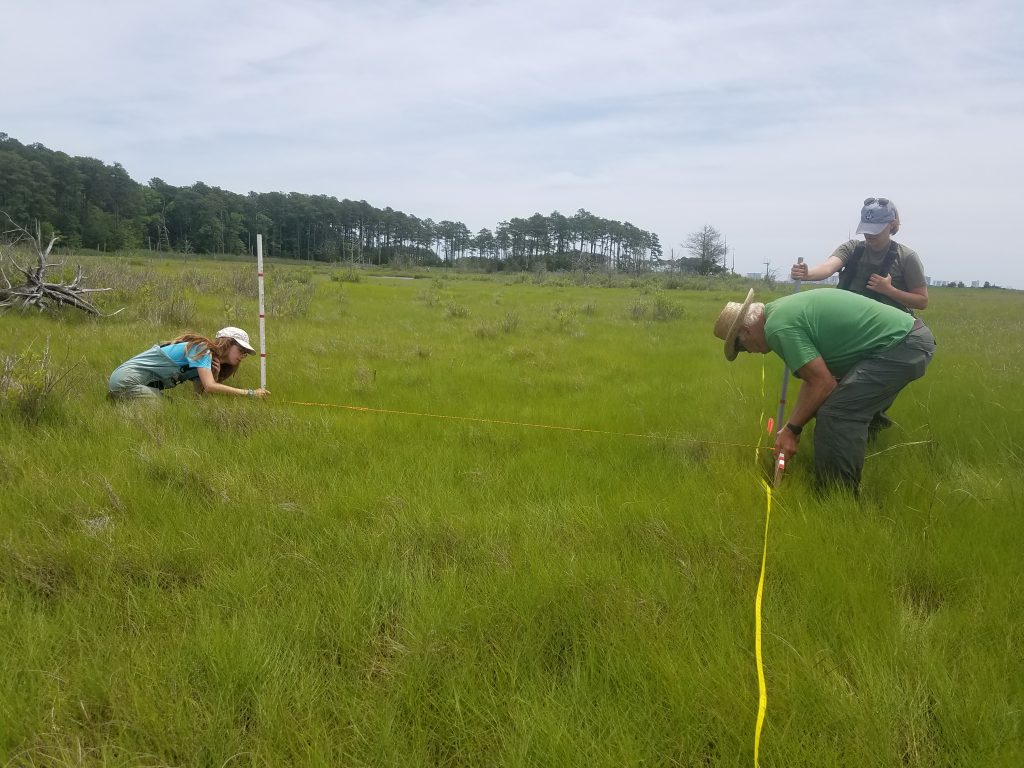Estuaries by the Sea: Maryland Coastal Bays Program Builds on Partnerships
Dedicated to protecting the five coastal bays behind Ocean City and Assateague Island, the Maryland Coastal Bays Program (MCBP) conducts research, restoration, monitoring, and education and outreach opportunities thanks to powerful partnerships.
Maryland’s coastal bays make up one of the richest, most diverse estuaries on the eastern seaboard. For more than a century, agriculture, forestry, fishing, hunting, and more recently tourism have sustained ways of life built on the land and water resources in this coastal community.
The 175-square-mile watershed of the coastal bays includes Berlin, Ocean City, and parts of Snow Hill and Pocomoke City, as well as the Assawoman, Isle of Wight, Sinepuxent, Newport, and Chincoteague bays.
Here, more than 300 species of migratory waterfowl, songbirds, and birds of prey seek the shallow bays for food and shelter. Rare species of plants and animals join blue crabs, flounder, and clams in calling this estuary home.One of only 28 designated National Estuary Programs, the Maryland Coastal Bays Program is a nonprofit partnership among the towns of Ocean City and Berlin, the National Park Service, Worcester County, the U.S. Environmental Protection Agency, and the Maryland Departments of Natural Resources, Agriculture, and Planning. These partnerships have allowed the program to achieve some monumental tasks to help protect our important resources.
Growing Momentum
A living shoreline project at Assateague State Park, completed in 2018, was designed by the Maryland Department of Natural Resources and built by Underwood and Associates of Annapolis, with funding from the Chesapeake and Atlantic Coastal Bays Trust Fund, to prevent erosion and increase shoreline habitat. Plantings of native grasses and invasive control continued into 2019. The shoreline replaced an eroding marsh using boulders and rocks to form the skeleton of the scalloped coastline. Sand and cobble filled in spaces at the boulders and were planted with native marsh and dune grasses to knit the shoreline together. One challenge was to protect the seagrass beds which are found near the shoreline in Sinepuxent Bay. Monitoring of the grass beds indicates no negative effects from the shoreline stabilization efforts.
The Ilia Fehrer Nature Preserve represents 431 acres of land located on Assateague Island Road, Route 376 east of Berlin. The property was purchased in 2011 with a federal grant from the Coastal and Estuarine Land Conservation Program, which enabled Worcester County to acquire the tract for conservation uses in perpetuity. A portion of the tract contained a 65-acre loblolly monoculture. Part of the purchase agreement was to restore the pine composition to reflect the surrounding Holly Grove Swamp forest community.
Maryland Coastal Bays Program and Worcester County completed the silviculture harvest phase of the restoration in 2015 and continued restoration through altering the water flow to approximate historic levels in 2019. The waterflow process was hampered by past forestry practices including bedding (a process of planting in rows), drainage ditches, and existing decking areas, areas created to demote growth. Recontouring of the bedding and reshaping of the bedded rows on approximately 10 acres, completed in 2019 by the Maryland Department of Natural Resources, has altered the water flow, which is expected to encourage wetland vegetation regrowth and allow for greater groundwater recharge. Funding for the project was through a grant from the Chesapeake and Atlantic Coastal Bays Trust Fund.
The fifth year of fish monitoring at the Bishopville Fish Passageway was completed in 2019 and documented that the fish passage project is successful to date. The dam at Bishopville was a barrier to fish passage until 2014 when the dam was transformed into a series of shallow steps and pools by the design firm Underwood and Associates of Annapolis. This new configuration allows fish to navigate into freshwater tributaries to spawn. Fish such as alewife and blueback herring, which live in the ocean but must lay their eggs in fresh water, need unobstructed passage to upstream waters. Dams keep these important forage fish from reaching freshwater spawning locations. The Bishopville project is an innovative approach to providing fish passage while maintaining the original pond, which is important to the community.
Roadmap for the Future
A pilot program was started in 2019 to assess tidal wetlands throughout the coastal bays’ watershed. The health of tidal wetlands in the watershed is currently unknown and it is important to document how these wetlands are responding to changing environmental conditions. With the assistance of the Delaware Department of Natural Resources and Environmental Control and using the Mid-Atlantic Tidal Wetland Rapid Assessment Method, 20 tidal wetlands throughout the watershed were evaluated. Surrounding land use, migration potential, percent ditching, vegetation biodiversity, and percent invasive species are a few of the metrics measured by the protocol. These assessments can be used to determine potential restoration and conservation projects, as well as track how the wetlands are changing over time.
Surfrider’s ‘Strawless’ Summer campaign in 2018 set the precedent for the Town of Ocean City’s Green Team to take reducing single-use plastic to another level in 2019 by creating a source reduction program. MCBP is one of three environmental nonprofit members that meet regularly with city leaders, civic organizations, and associations on a green team working on environmental issues and concerns. MCBP led grant funding for the pilot source reduction program in 2019 and thanks to many partners including Worcester County, the Maryland Department of Health, the National Oceanic and Atmospheric Administration, the Maryland Department of Natural Resources, the U.S. Environmental Protection Agency, Keep America Beautiful, and Keep Maryland Beautiful, funding was secured for a program that will continue throughout the summer of 2020.
In 2019, MCBP continued its partnership with the Worcester County Board of Education and their teachers and students. MCBP is a community partner for many teachers in the county and provides them with educational service days at restoration sites. By hosting between 40-80 students on the properties at one time, we can tackle large-scale service projects such as invasive plant removal and trail maintenance. Since January, MCBP has provided 10 service days and 13 in-class lessons to more than 1,470 students, totaling over 1,180 volunteer hours.
MCBP has also continued a strong partnership with the Maryland Association of Environmental and Outdoor Education (MAEOE). From 2017-2018, MCBP was Buckingham Elementary School’s community partner on their Maryland Green Schools certification. MCBP assisted on their planning committee, provided a grant for their outdoor classroom, and ran an afterschool program supporting the application. The school successfully received their certification in May 2018! MCBP also reviews Green School applications annually, is on the planning committee for the annual MAEOE conference, and just received their second re-certification as a Green Center in April 2019.
mdcoastalbays.org
Sandi Smith is the outreach and marketing coordinator for the Maryland Coastal Bays Program. Article appears in Vol. 23, No. 1 of the Maryland Natural Resource magazine, spring 2020.






 1-888-373-7888
1-888-373-7888 233733
233733